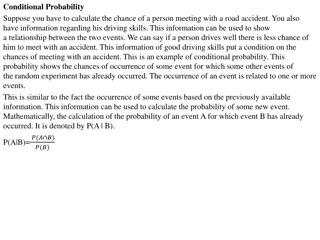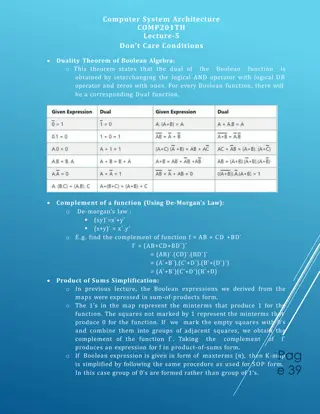
Discovering Pythagorean Theorem through Examples and Problem Solving
Explore the Pythagorean theorem through historical discoveries, practical examples, and problem-solving strategies. Understand the concept with proofs, calculations, and real-world applications to enhance your geometry skills effectively.
Download Presentation

Please find below an Image/Link to download the presentation.
The content on the website is provided AS IS for your information and personal use only. It may not be sold, licensed, or shared on other websites without obtaining consent from the author. If you encounter any issues during the download, it is possible that the publisher has removed the file from their server.
You are allowed to download the files provided on this website for personal or commercial use, subject to the condition that they are used lawfully. All files are the property of their respective owners.
The content on the website is provided AS IS for your information and personal use only. It may not be sold, licensed, or shared on other websites without obtaining consent from the author.
E N D
Presentation Transcript
THE Powerpoint hosted on www.worldofteaching.com Please visit for 1000 s more free powerpoints
This proof was discovered by President J.A. Garfield in 1876. The key is the formula for the area of a trapezoid half sum of the bases times the altitude * (a+b) * (a+b). Looking at the picture another way, this also can be computed as the sum of areas of the three triangles *a*b + *a*b + *c*c. As before, simplifications yield a2+ b2=c2. Here is the following calculation. (a + b)(a + b) = ab + ab + cc (a + b)2 = (ab + ab + cc) (a + b)2 = (ab + ab + cc) a2 + b2 + 2ab = 2ab + c2 a2 + b2 = c2
EXAMPLES: Find the unknown variable 4 cm 13cm x d 7cm d 5cm Solution: Solution: d2 + 42=72 d2 = 49 - 16 d = 5.74 cm d2 = 132 - 52 d2 = 169 - 25 d2 = 144 d = 12 cm Solve for x x2 = 122 +122 x2=144+144 x2 = 288 x = 17.0 cm
Problem Analysis: 1. Find the length of a diagonal of a rectangle of length 9 cm and width 4 cm. 4 cm 9 cm Solution: d2 = 92 + 42 d2 = 81 + 16 d2 = 97 d = 9.85 cm
2.A square has diagonals of length 10 cm. Find the sides of the square. 10 cm s2 + s2 = 102 2s2 = 100 s2 = 50 s = 7.07 cm
3.A ship sails 20 km due North and then 35 km due East. How far is it from its starting point? Solution: 35 km X2 = 202 + 352 X2 = 400 + 1225 X2 = 1625 20km x X = 40.3 km
DRILL: 1. A 4 m ladder rests against a vertical wall with its foot 2 m from the wall. How far up the wall does the ladder reach? 2. Find the length of a diagonal of a rectangular box of length 12 cm, width 5 cm and height 4 cm.
It is better wither to be silent, or to say things of more value than silence. Sooner throw a pearl at hazard than an idle or useless word; and do not say a little in many words, but a great deal in a few. -Pythagoras






















